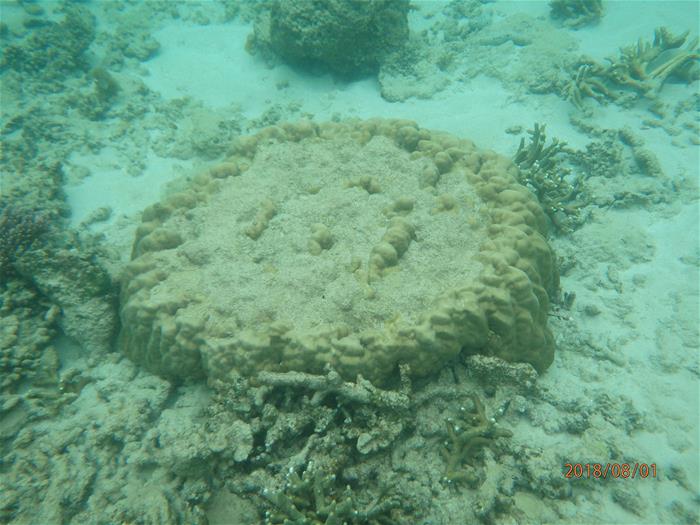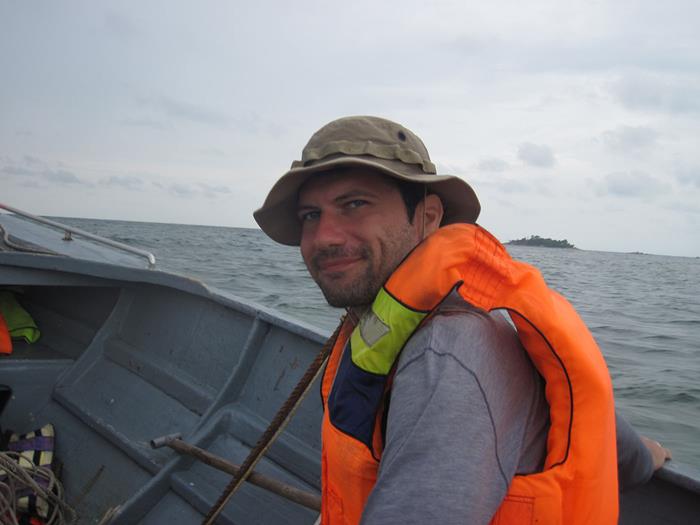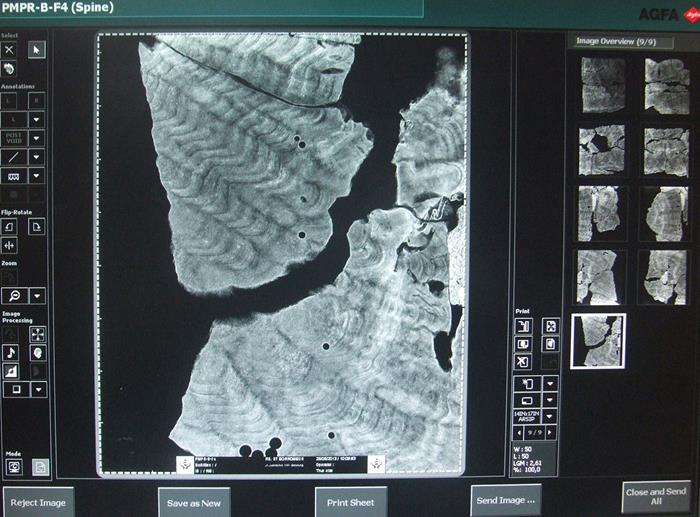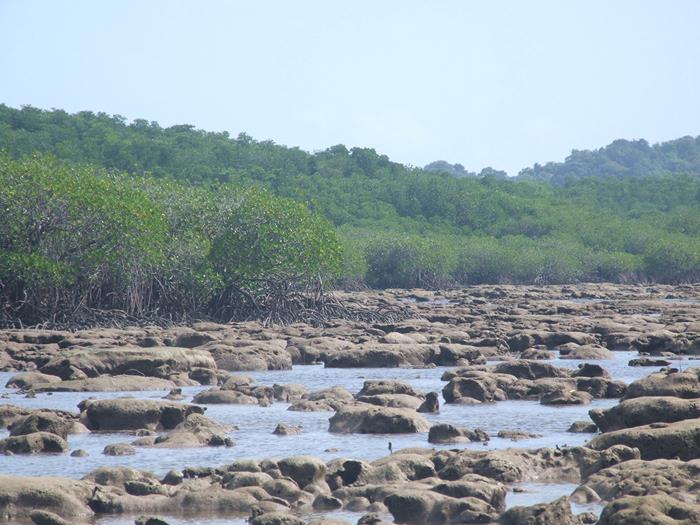Until recently, tide gauges and satellite observations offered the only clues to the long-term rates of sea-level change in Singapore. These sources pointed to a rapid sea-level rise in the region. But while they are precise, satellite records only go back to 1993 and tide gauges extend this record to the 1970s. Older records are either patchy or lost, and reconstructing sea-level trends requires long records.
Now, a new study of coral microatolls from the nearby Indonesian Island of Mapur extends the record to the beginning of the 20th century and paints a more nuanced picture of sea-level change.

An example of a living coral microatoll colony, note the characteristic flattened shape with a living outside tissue and a dead flattened top. This form is caused by occasional very low water levels (Source: Jedrzej Majewski/Earth Observatory of Singapore)
Coral microatolls are an unusual form of coral colonies that grow near the water surface. They grow outward and upward, occasionally, a particularly low tide will expose them to the air and sun, damaging their surface. The damage from the low tide leaves permanent evidence — characteristic rings on the upper surface of the colony — in the coral’s structure. Because the colonies can survive for decades, sometimes even centuries, their growth patterns can shed light on periods of past sea level. By examining such corals and comparing the damaged portions, we can infer whether the sea level changed over time or remained more or less stable.
Our study, which was recently published in Geophysical Research Letters, began in 2013 when a group of scientists from the Earth Observatory of Singapore, myself included, and our colleagues from the Indonesian Institute of Sciences (LIPI) visited Mapur, a small Indonesian island off the coast of Bintan, about 100 kilometres southeast of Singapore. Crossing the final stretch of the South China Sea from Bintan to Mapur, I certainly had no idea how much time and effort the study was going to take. Nor was it the first thing on my mind as our small carbon fibre fishing boat with a less-than-reliable engine attempted to avoid the worst of the two-and-a-half metre waves that dwarfed the small vessel.

Photo of the first author of the study, Dr Jedrzej Majewski, while crossing over to Mapur island, during calm weather (Source: Jedrzej Majewski/Earth Observatory of Singapore)
That day, and over the next few weeks, we investigated hundreds of coral colonies growing on the coastal reef. Among them were two colonies which, we later discovered, had a very interesting story to tell us about sea level. With an imagination worthy of true scientists we labelled them NW-M1 and SE-M1. We sampled both colonies by slicing a segment from the centre point of each colony all the way out to their circumference. The segments were packed and shipped off to Bandung, where they were imaged with an x-ray machine in the local hospital. Coral colonies, like trees, grow one hard and one soft ring each year. By counting the rings on the x-ray images we can determine the age of the corals.

A radiograph of a coral microatoll slice produced in a hospital in Bandung showing lighter and darker bands in the structure. These bands are caused by density changes in the coral structure and they are annual, meaning that they can be used to count back the years to the formation of any part of the coral colony (Source: Jedrzej Majewski/Earth Observatory of Singapore)
NW-M1, the larger and older of the two corals, began its life towards the end of the 19th century. By the time we arrived on Mapur, it had already been growing for over a century. The early portions of the record were not preserved well but it still managed to preserve an amazing 98-year record of sea-level changes starting from 1915.
The detailed analysis, careful interpretation of the results, and comparison with other data took years. But the results are well worth the time spent: they suggest that while sea-level rise is evident in the latter part of the 20th century and the beginning of the 21st, as evidenced by other records, much of the early 20th century was actually a period of stable sea level in Singapore. Before this study not much was known about the regional sea-level change over the early 20th century. The existing global models, when scaled down to Singapore, would have suggested that the sea level in Singapore had been increasing during this period.
Scientific observations always come with an uncertainty, as do the tide gauge records and our own coral microatoll records. But by combining our results with those from tide gauges and analysing them together using a statistical model developed at Rutgers University in the USA, we were able to cut down the uncertainty of the entire sea-level record by half.

A coral microatoll field on the east coast of Mapur Island, taken during low tide. Most of the corals visible in this particular photo are fossils, remnants of a higher sea level during the mid holocene. Their modern equivalents live a few metres further out to sea and in deeper in the water (Source: Jedrzej Majewski/Earth Observatory of Singapore)
Apart from extending the sea-level record of Singapore by over 50 years and improving its precision, the study is important for another reason: it shows a way to reconstruct past sea-level records where no tide gauges have been installed, here in Southeast Asia and in much of the rest of the tropical world.
Southeast Asia has a large population living in low lying areas and is one of the regions that will be most affected by rising seas in the next decades. To mitigate the impacts of sea-level rise, countries in the region need precise predictions of future sea-level change. This is only possible if we know enough about past sea levels. And since coral microatolls can preserve records of sea-level change, they can provide information where tide gauge records are lacking. To prepare for the future, we can look to these corals for stories of past sea-level change.